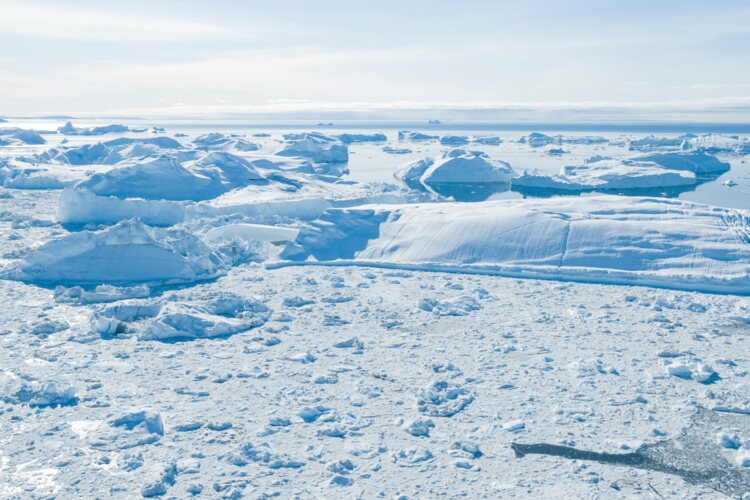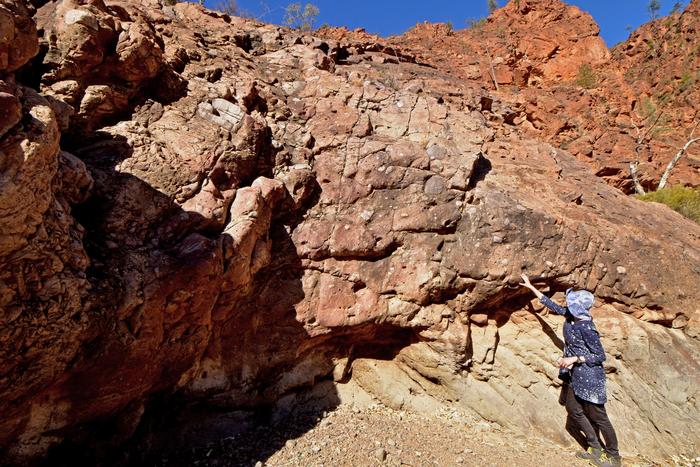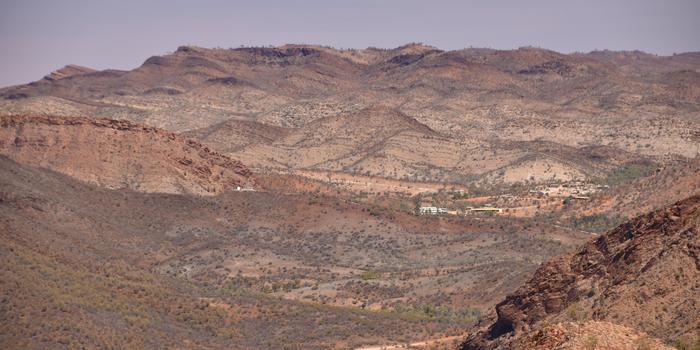
A new study links an all-time low in volcanic carbon dioxide emissions to the 57-million-year-long global ‘Sturtian’ ice age
By
Some 717 million years ago, the Earth was a barren place. Dinosaurs and land animals existed only in the very distant future. Complex plant life would not appear for at least another 200 million years. What did exist was ice, and lots of it. For 57 million years, Earth was entirely frozen over, a great blanket covering the globe from pole to pole.
The reasons for this extreme ice-age – named the Sturtian ice age after the 19th century European colonial explorer of central Australia, Charles Sturt – have long been unclear. While numerous theories have been put forward for its trigger and its end (around 660 million years ago), the unprecedented length has been an intriguing mystery. Now, geoscientists at the University of Sydney think they may have the answer.
Published in the journal Geology, the study proposes that all-time low volcanic carbon dioxide emissions both triggered the relentless onslaught of the ice and accounted for its duration. As a greenhouse gas, CO2 traps heat in the atmosphere, warming the Earth’s surface. Its absence therefore has a cooling effect.

At the time of the ice age, there were no multicellular animals or land plants on Earth. The greenhouse gas concentration of the atmosphere was therefore almost entirely dictated by CO2 ‘outgassing’ from volcanoes and by the weathering of silicate rock, a process which consumes CO2. Outgassing encompasses the release of gases during volcanic eruptions as well as releases at submarine hydrothermal vents.
A field trip to the Flinders Ranges in South Australia, where glacial debris left over from the ice age can be spectacularly observed, prompted the research. Having made observations, the scientists used computer modelling to investigate the cause and duration of the extreme glaciation. This work revealed that the start of the Sturtian ice age precisely correlates with an all-time low in volcanic CO2 emissions. In addition, the CO2 outflux remained relatively low for the entire duration of the ice age.
The discovery rests on the link between volcanic activity and plate tectonics. The researchers used an existing plate tectonic model that shows the evolution of continents and ocean basins at a time after the breakup of the ancient supercontinent Rodina. They connected it to a computer model that calculates CO2 degassing of underwater volcanoes along mid-ocean ridges – the sites where plates diverge and new ocean crust is born. It was this process that revealed prolonged low emissions.
Commenting on the study, co-author Dietmar Müller from the University of Sydney said: ‘Geology ruled climate at this time. We think the Sturtian ice age kicked in due to a double whammy: a plate tectonic reorganisation brought volcanic degassing to a minimum, while simultaneously a continental volcanic province in Canada started eroding away, consuming atmospheric CO2.
‘The result was that atmospheric CO2 fell to a level where glaciation kicks in – which we estimate to be below 200 parts per million, less than half today’s level.’

Earth has experienced at least five major ice ages, with the Sturtian being the third (moving from the oldest to the youngest). The most recent started about 2.6 million years ago and we are technically still living through it, albeit in a period known as an ‘interglacial’ during which temperatures will fluctuate between colder and warmer levels.
Volcanoes can have a number of consequences on the atmosphere. During eruptions, huge amounts of volcanic gas, aerosol droplets, and ash are injected into the stratosphere. It is the gases, including sulfur dioxide and CO2 that have the most significant long-term impacts on the climate. Sulfur dioxide can cause global cooling, while volcanic CO2 has the potential to promote global warming.
Very large volcanic eruptions can inject significant amounts of CO2 into the atmosphere. The 1980 eruption of Mount St. Helens vented approximately 10 million tons of CO2 into the atmosphere in only nine hours. This still pales in significance to man-made emissions however. It currently takes humanity only 2.5 hours to put out the same amount.



